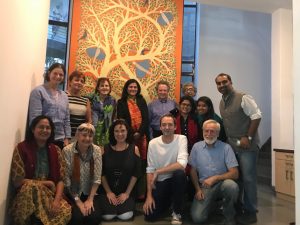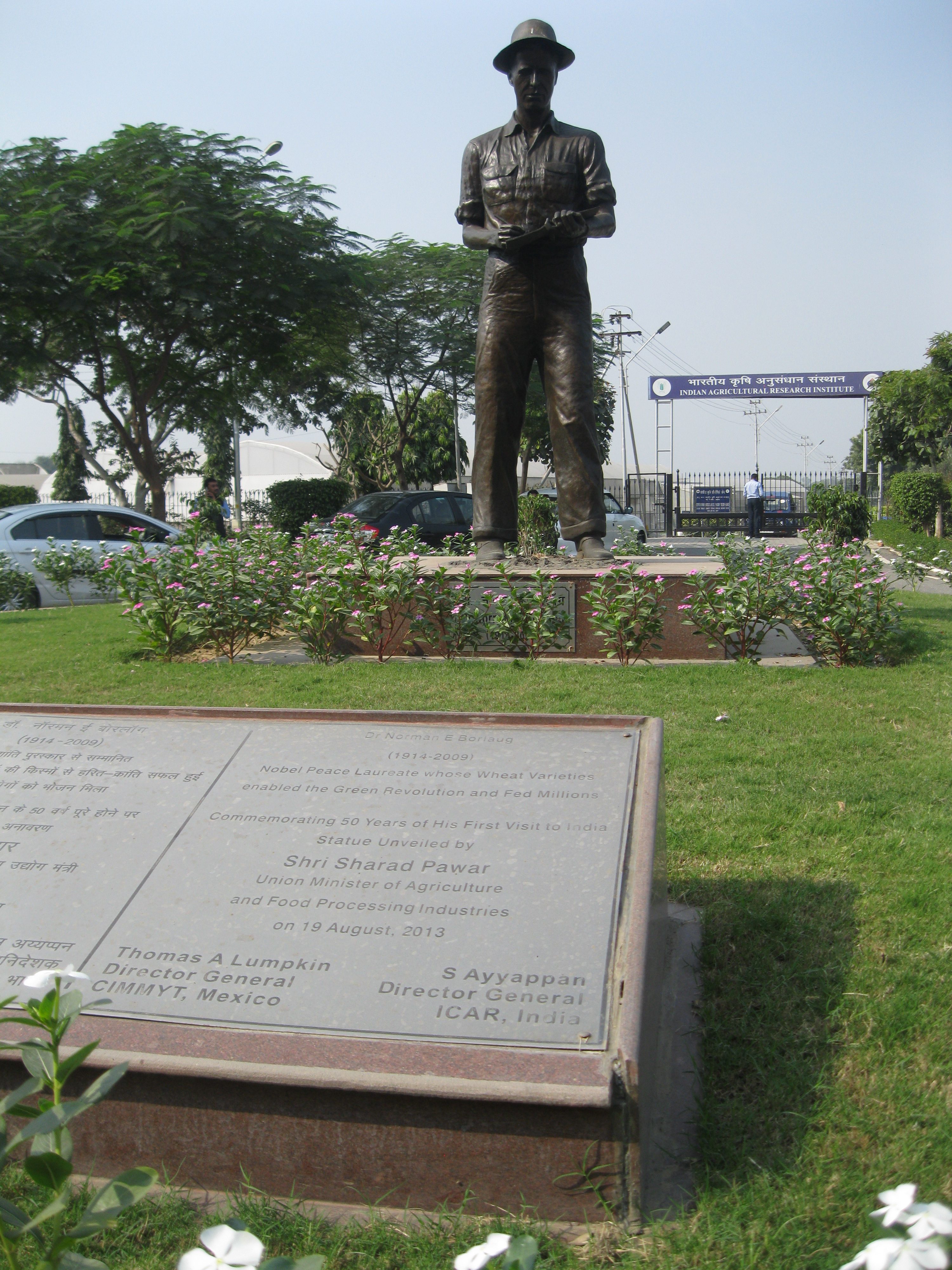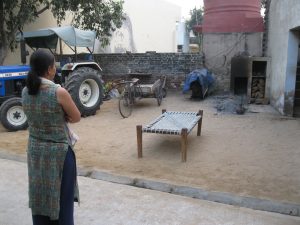Board members of the Association Internationale Des Musées D’Agriculture (AIMA) met for their annual meeting in New Delhi, India, November 25-30, 2018. Surajit Sarkar, Ambedkar University, coordinated the visit. Nerupama Y. Modwel, director of Intangible Cultural Heritage Division of the Indian National Trust for Art and Cultural Heritage (INTACH) greeted AIMA board members on November 26 at INTACH headquarters on Lodi Road in New Delhi.

AIMA Board members (above) posed along with INTACH staff. The mural in the background is a Gond painting by an artist from the Gond tribal community, predominantly from the central Indian state of Madhya Pradesh. [Photograph by Piret Emily Hion (Estonia), November 26, 2018].

AIMA board members visited the National Museum of Agriculture, located at the headquarters of the Ministry of Agriculture in Pusa, New Delhi (left).

While there, delegates walked through experimental grounds at the Ministry’s of Agriculture’s headquarters. A statue of Norman Borlaug (left), credited with launching the Green Revolution, stood at the entrance to the experimental grounds, adjacent to a structure that housed experiments in soilless production practices for use in urban and peri-urban areas.
AIMA delegates also met with faculty and graduate students at Ambedkar University, prior to visiting with farmers in Ghummanhera village near Delhi. Faculty and students work with members of rural communities to document changes in agricultural practices, rural community issues, and farmer activism. They introduce audio-video recording techniques to residents to empower them to record their own stories. They then share them through public events that feature the art of agriculture.

A village courtyard at the end of a November day included the latest model New Holland tractor alongside a tri-cycle fitted with a wagon bed to haul materials from village house to workshops and farm fields. Families rely on dried cow manure for fuel (stacked in the shelves next to the firebox. Families cook mash for their cattle at these outdoor fireplaces (using dried cow manure as fuel). Some families shelter their cattle in their house courtyards. The farm families raise rice, wheat, maize (corn), and millett. They employ migrant laborers to work their fields, harvest and thresh their grain crops, and tend to their cattle. The land-owning and -leasing families struggle with maintaining soil fertility because of changing water tables, water policy, and salinity in water supplies used for irrigation.
Urban pressure also put many farms at risk, even as jobs in urban areas allow some to send money home to maintain farms and rural communities.
 Many drivers who hauled AIMA delegates around the city of 26 million residents shared their stories about earning money far from their families. The drivers of motorized rickshaws and taxis (right) stay busy hauling tourists and residents around the congested city.
Many drivers who hauled AIMA delegates around the city of 26 million residents shared their stories about earning money far from their families. The drivers of motorized rickshaws and taxis (right) stay busy hauling tourists and residents around the congested city.

Learning more about how some India farm families care for their sacred cattle, including their prized dairy cattle, helps use be more thoughtful about the cultural practices in our region. This can lead to more compelling interpretations of agriculture and the environment, and thoughtful discussions of food supplies and feeding populations locally, regionally, and globally.
Stay tuned for more in an upcoming AIMA newsletter.
Submitted by Debra A. Reid, 2nd Vice President, AIMA and Curator of Agriculture and the Environment at The Henry Ford, Dearborn, Michigan.
